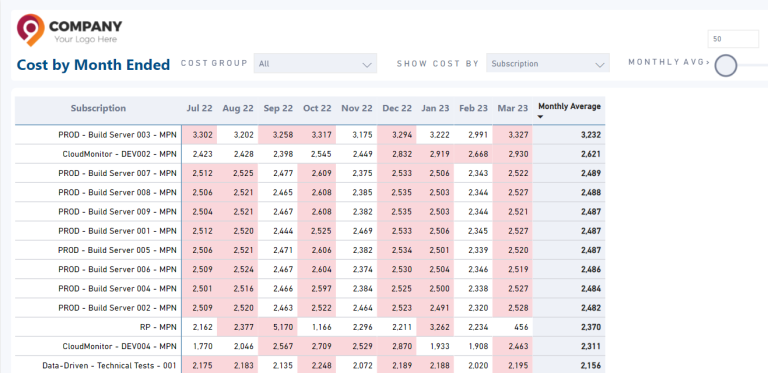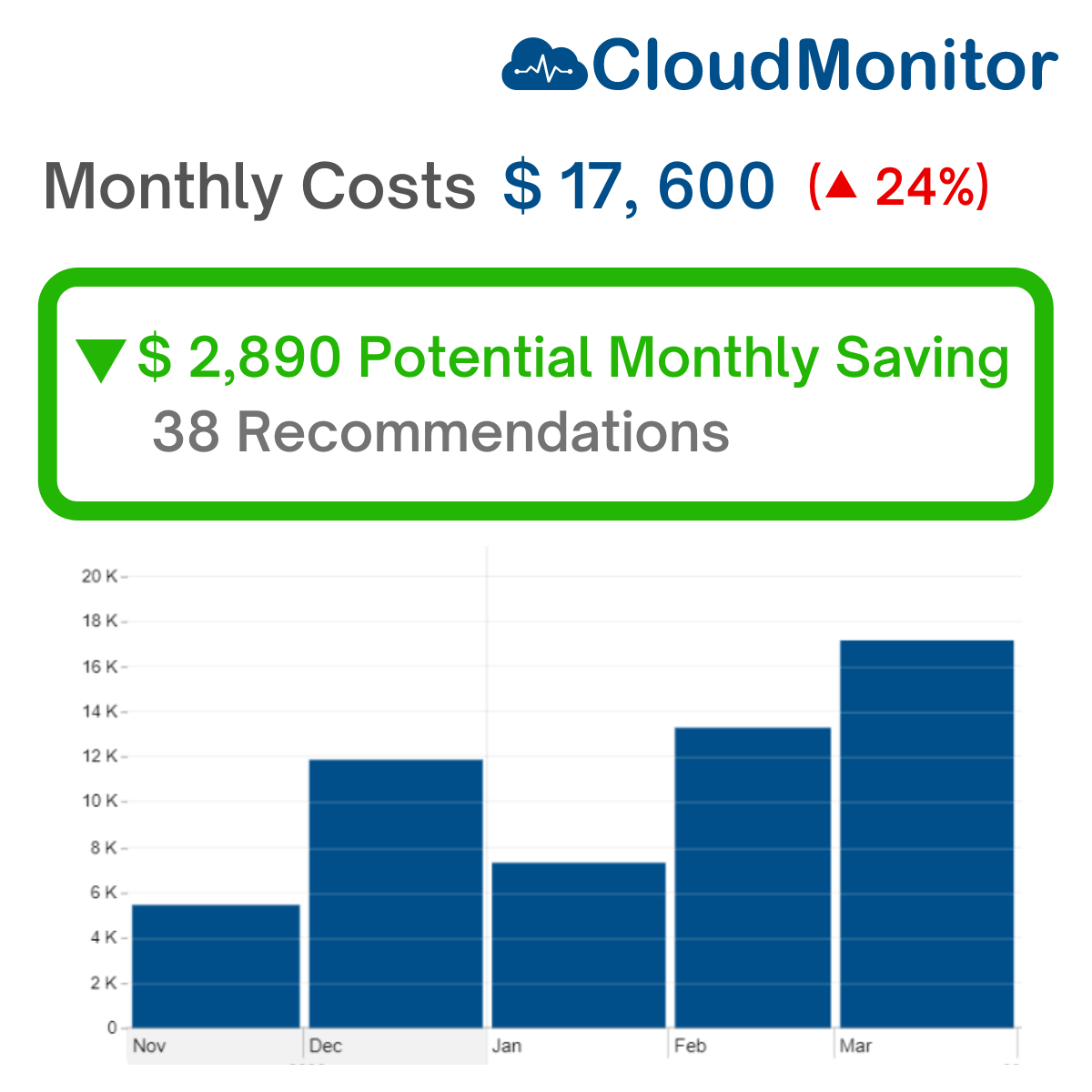Resource Utilization and Efficiency Capability
Resource utilization and efficiency are critical components of FinOps because they directly impact an organization's cloud costs. Inefficient use of cloud resources can result in wastage.
Resource utilization and efficiency are critical components of FinOps because they directly impact an organization’s cloud costs. Inefficient use of cloud resources can result in wasted spending and can lead to unexpected spikes in cloud bills. By optimizing resource utilization, organizations can reduce costs and improve their overall cloud ROI.
CloudMonitor features related to Resource Utilization and Efficiency

Cost by any Metric
You can use the Cost by Resource X page in CloudMonitor to analyze the cost of each resource and resource type over a period of time. By identifying which resources are driving up costs, your organization can optimize its resource usage and increase efficiency.
Cost by Cost Group
The Month on Month variance tool in CloudMonitor is an effective way to track resource costs and identify areas of inefficiency in your organization’s cloud infrastructure. By analyzing the cost of resources over time, your organization can determine if you are paying more than necessary for a specific resource or if there are opportunities to optimize resource usage.

Resource Utilization and Efficiency Definition
Resource utilization and efficiency is an essential aspects of FinOps, which aims to ensure that cloud costs associated with each type or class of resource consumed align with business value. Monitoring a resource’s utilization over time is necessary to assess whether the performance, availability, or other quality metrics justify the associated costs.
In the case of compute resources, there may be instances where it is deemed worthwhile to decrease average utilization to achieve performance or availability gains, despite the additional expenses incurred. Conversely, lowering performance expectations may be a viable option to reduce costs. However, it is essential to consider resource utilization, efficiency, and cost together when making such decisions.
Unlike compute resources, storage resources require an estimate of the latent inefficiency in the stored data, along with an assessment of the potential gross savings that can be achieved by removing or rightsizing that inefficiency. Different data sets have unique latent inefficiencies that require tailored approaches, such as highly compressible but uncompressed data having relatively high latent inefficiency, whereas encrypted data has relatively low or no latent inefficiency. Furthermore, infrequently accessed data stored in a high-cost, high-performance storage class or tier also has relatively high latent inefficiency. It is essential to determine the cost of applying data efficiency infrastructure to realize net savings, along with assessing the performance and availability impact of the infrastructure to ensure it meets users’ and applications’ needs.
Managing resource utilization and efficiency involves identifying opportunities to reduce resource costs while maintaining the required performance and making changes where it is economically feasible to do so. This involves striking a balance between cost optimization and resource availability and performance, which requires a thorough understanding of the organization’s specific needs and goals.
Resource Utilization & Efficiency by FinOps Foundation

